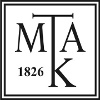Dobosi, Linda and Hegyi, Dezső (2025) An innovative construction technique in Roman theatres: The structural analysis of the cavea substructure in the theatres of Augusta Raurica (Augst) and Aventicum (Avenches). JOURNAL OF ARCHAEOLOGICAL SCIENCE, 180. pp. 1-17. ISSN 0305-4403
|
Text
Dobosi-Hegyi_AninnovativeconstructiontechniqueinRomantheaters_JAS_2025.pdf - Published Version Available under License Creative Commons Attribution. Download (17MB) | Preview |
Abstract
Ancient Roman engineers used different methods when building the substructure of the seating area (cavea) of theatres and amphitheatres. In the northwestern provinces of the Empire, they often supported the seats by an artificial earth embankment which posed the structural problem of containing the soil infill. Because the curved perimeter wall of the cavea was not able to withstand the lateral earth pressure on its own, Roman engineers started experimenting with reinforcement systems which led to a variety of different cavea substructures. One of the most innovative and intriguing solutions to this problem can be seen in the theatre of Augusta Raurica (present-day Augst, Switzerland) where the retaining walls of the theatre were reinforced by series of semicircular buttresses. In the almost identical theatre of Aventicum (Avenches, Switzerland) the more traditional solution of a system of radial and annular walls were used for the same purpose. To get a better understanding of the structural behaviour of the theatre in Augst, the cavea substructure of both the theatres of Augst and Avenches were analysed with finite element method (FEM). Contrasting the structural properties and the amount of building material needed for each of the two theatres shed light on some of the reasons why the unconventional solution utilized in Augst did not become common. Although it used less building material, it was not as robust as the structural solution used in Avenches. Also, the support for the long, rectangular limestone blocks of the seating were not sufficient in Augst and the seats might have been subject to a considerable uneven sinking as the earth infill under them consolidated and shrank.
| Item Type: | Article |
|---|---|
| Uncontrolled Keywords: | Gallo-Roman theatre, Roman amphitheatre, Cavea substructure, Structural analysis, Finite element method, Silo effect, Lateral earth pressure |
| Subjects: | C Auxiliary Sciences of History / történeti segédtudományok > CC Archaeology / régészet |
| SWORD Depositor: | MTMT SWORD |
| Depositing User: | MTMT SWORD |
| Date Deposited: | 25 May 2025 06:14 |
| Last Modified: | 25 May 2025 06:14 |
| URI: | https://real.mtak.hu/id/eprint/219420 |
Actions (login required)
 |
Edit Item |



